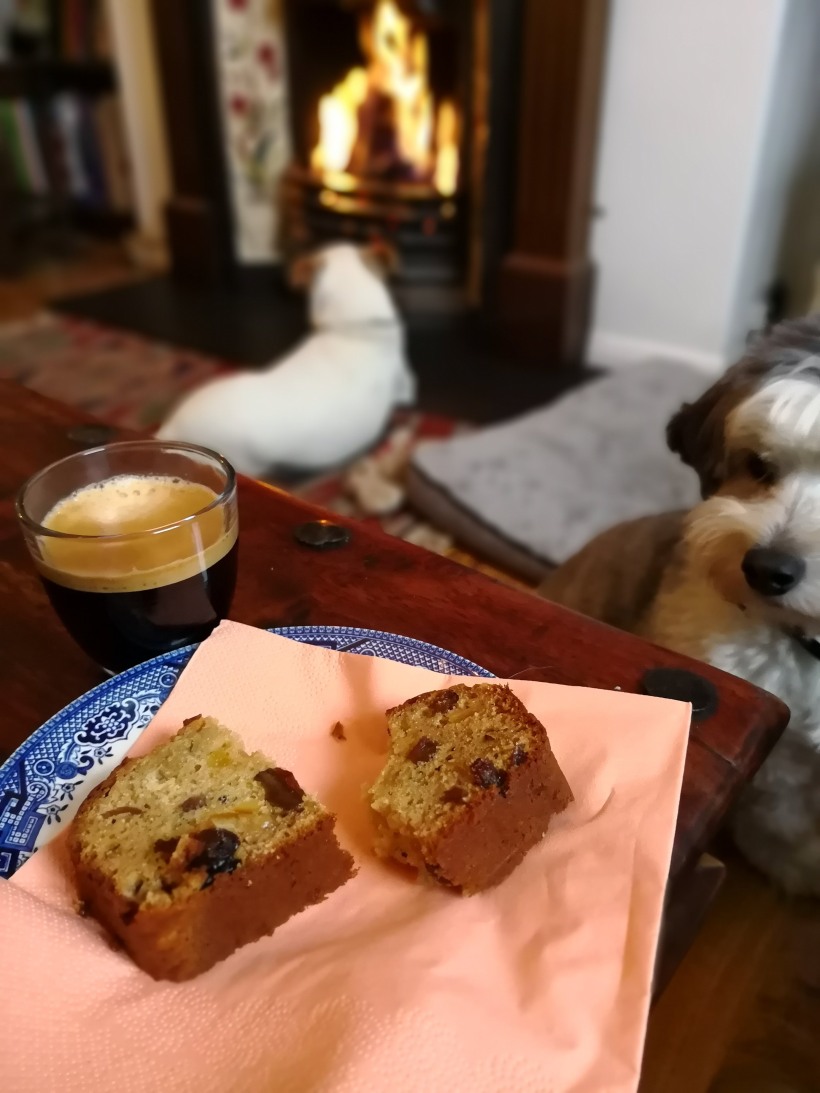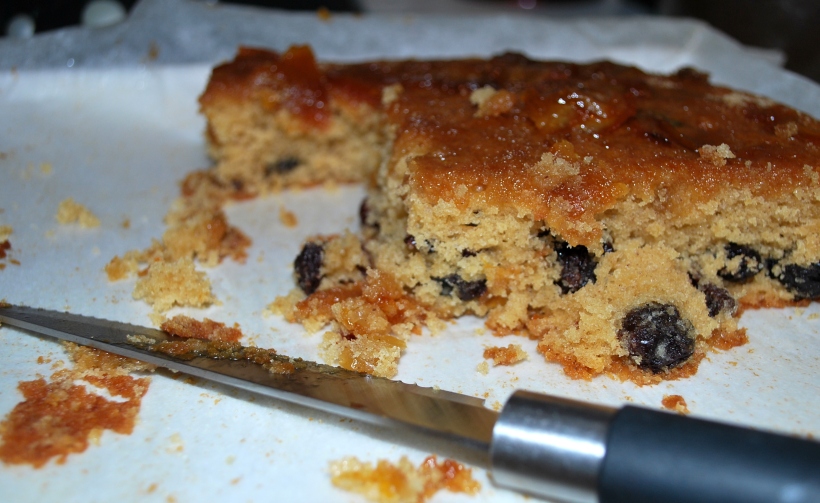Big Man has been in Spain for a couple of weeks so the day before he returned I cooked some dishes he would enjoy to welcome him home. This included a cake, as a special treat, and it was perfect for sitting around the next day (which was cold and snowy) with some good strong coffee while we had a good old catch up.

Regular readers of the blog will know that I don’t make many cakes, and when I do I mostly go down the “all in one” route and tend to use olive oil rather than butter. Not for health reasons, but because when I first started living in Spain it was more difficult for me to get hold of good quality butter (and getting it home before it melted in the summer was an adventure in itself). As we produce our own wonderful olive oil each year, it made sense to substitute this for the butter and I soon found that it produced light and delicious cakes…so I simply kept on using it.
This is more of a tea loaf than a sponge cake and would be delicious spread with butter (the best of both worlds! ) although it’s delicious as it is. I baked this in a 23cm x 13cm loaf tin and it cuts into about 12 slices.
Ingredients
- 100g of sultanas soaked in your favourite tea (I used a ginger tea but Earl Grey would also be fantastic) then drained and cooled
- 100g chopped candied peel
- Approx 1 tablespoon of fresh grated ginger
- 175g self raising flour mixed with ½ teaspoon of salt
- 60ml olive oil
- 2 large eggs
- 150g of runny honey
Preheat the oven to 185° fan oven or 195° regular oven and line a loaf tin with greaseproof paper.
Beat the oil and honey together then add the eggs one by one. Mix in the drained sultanas, candied peel and fresh ginger then mix in the flour and salt. This cake mix is as forgiving as most of my others, so you don’t need to fold things together or be particularly gentle.
Pour the mix into the prepared loaf tin and bake for approx 45 minutes. Check if it’s done by inserting a skewer and if it comes out clean, you’re done. If it needs a few minutes longer and is beginning to brown, cover with some aluminium foil and give it another five minutes before checking again.
Cool for 5 minutes in the tin before turning out and cooling completely on a rack. Will keep for about 3 days in an airtight container.
If you enjoy citrus flavours, take a look at this Sticky Citrus and Marmalade cake.




